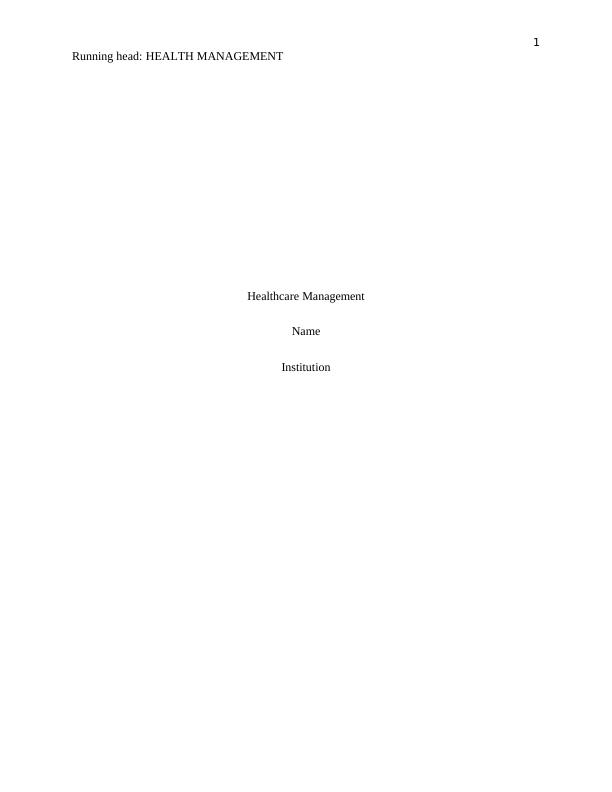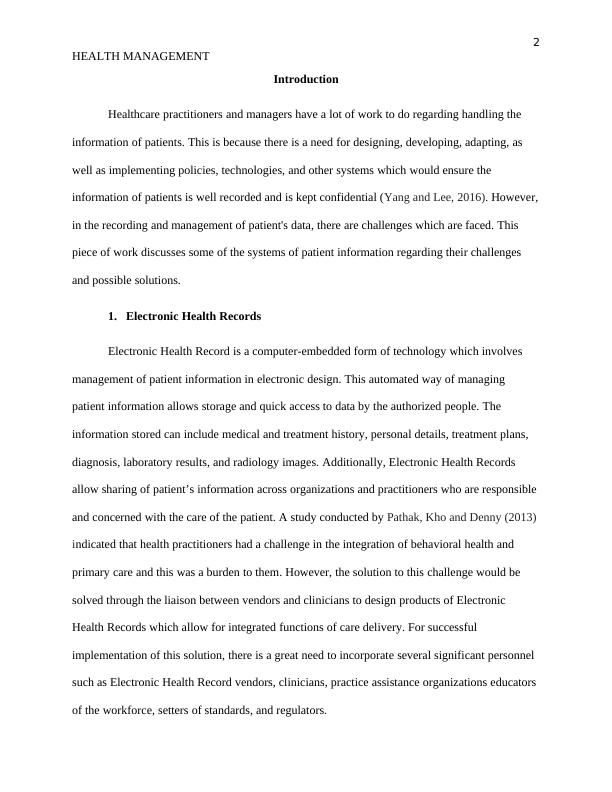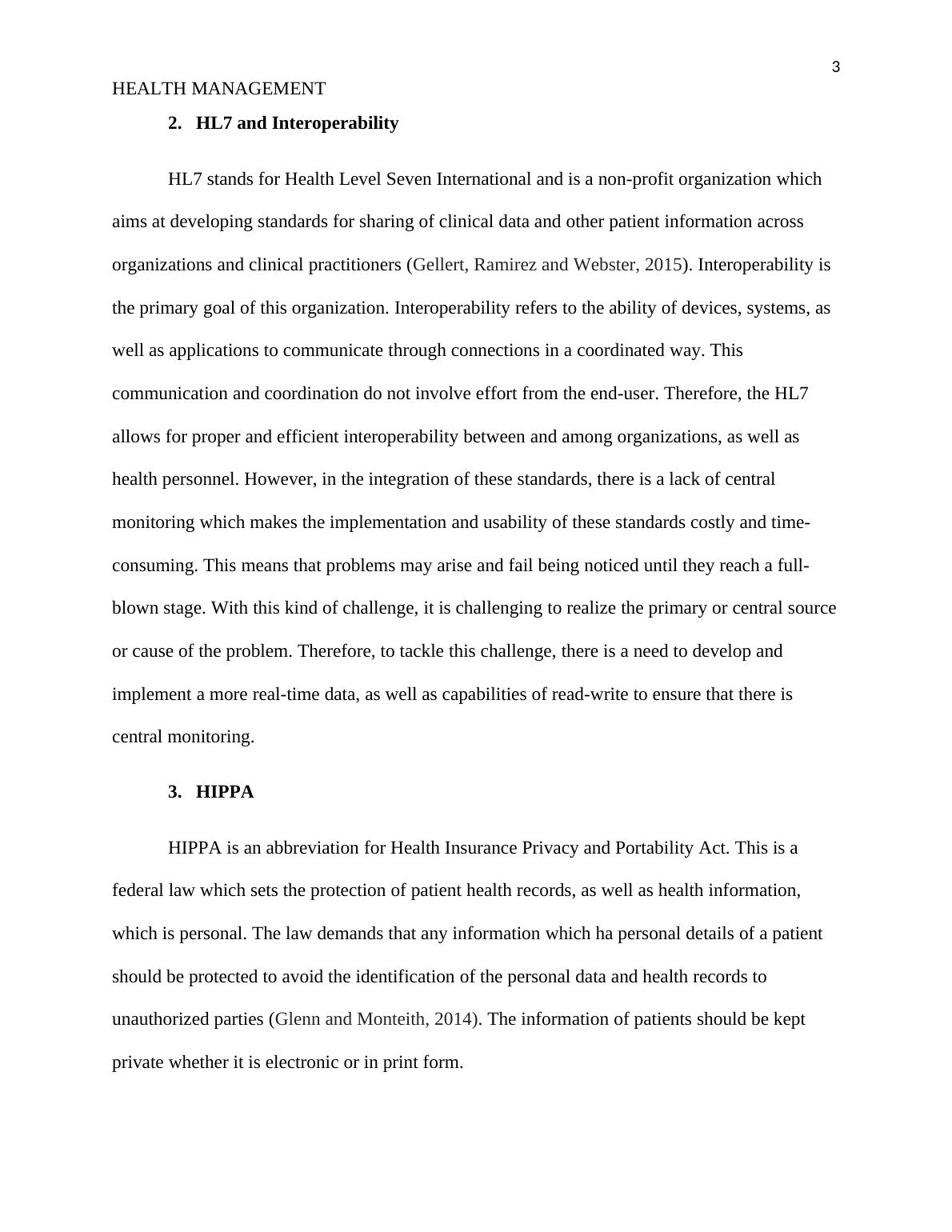Challenges and Solutions in Health Information Management
8 Pages1953 Words32 Views
Added on 2023-01-16
About This Document
This article discusses the challenges faced in managing health information and provides effective solutions to ensure privacy and efficiency. Topics covered include electronic health records, HL7 and interoperability, HIPPA, health information technology, health information and patient satisfaction, and telehealth and healthcare technology innovators.
Challenges and Solutions in Health Information Management
Added on 2023-01-16
ShareRelated Documents
End of preview
Want to access all the pages? Upload your documents or become a member.
Solutions to Challenge with Interoperability in the Health Care System
|5
|1105
|462
Ethical Concerns with Interoperable Electronic Health Records
|15
|4000
|53
Importance of Electronic Health Record (EHR) in Healthcare System
|9
|525
|126
Evaluation of FHIR in the Field of Electronic HIE System
|22
|6280
|331
Electronic Health Records System: Dualistic Viewpoints
|4
|893
|54
Analysis of HIPAA, Electronic Health Records and Quality Improvement Initiatives in Healthcare Information Management
|6
|1204
|340



